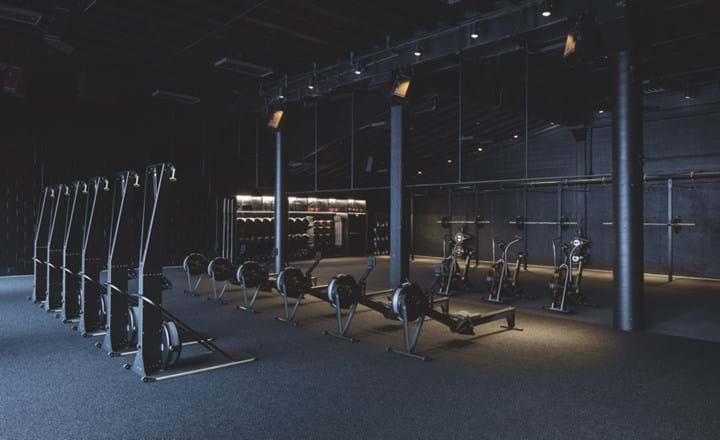
How would you describe your career in fitness?
I’ve been in the industry for 40 years, working in the YMCAs of America, corporate fitness, and I spent 20 years with ClubCorp in Dallas, doing every role from Fitness Director up to Senior Vice-President of Operations. And I spent close to three years in Russia as the CEO of the Russian Fitness Group, plus another two years working with one of the firms largest franchisees. That’s on the club operations side. More recently, I’ve been focused on the research side of the industry working with my business partner Mark Williamson on, helping other clubs to strengthen their offering.
What does your research work entail?
I have two consulting companies. At ClubIntel, my business partner Mark Williamson and I work with club operators, manufacturers and associations to help them better understand their brand – what it is, the value proposition, and how to refine it to make them stand out in the marketplace.
The other company is called Club Industry Consulting, which is more around education. For example, we have an online education program on Fitness Business Management that launched on the ACE (American Council on Exercise) platform in July. It’s essentially a deep-dive into the business of fitness – a one-semester online course including a book, videos, and a range of educational resources.

One of the areas you’ve been talking about recently is what fitness can learn from other industries, particularly gaming?
I am one of four owners of a video game company called Dinosaur Games and I strongly believe that gaming and sports entertainment are two industries fitness can learn a lot from. Typically, we tend to benchmark ourselves against other companies within our industry, but I think there’s much to be gained from doing the same with those outside. I picked gaming because I know a lot about the sector, but also for its ability to engage people globally and monetize the gaming experience. I also draw from sports entertainment, because there’s an element of fitness in there, but also a really strong element of entertainment. So I’ve been talking recently about the 12 things these industries do really well which their business models are built on.
What are the key takeouts?
I think one of the things they do really well is monetizing the emotions of the player. In fitness, we try to monetize people’s needs, but gaming companies have learned you can’t monetize a need like you can an emotion.
The second key point is that everything in gaming has a story. Every game, especially a good game, has a strong narrative. It’s a compelling journey and as the player goes deeper into the game that story evolves. Very few fitness club companies have a story that explains who they are; what they stand for; where they’re going; and what consumers can expect to experience.
The third is that abject failure is not an option in gaming. They have what’s called performance failure – you may fail at a certain level or part of the journey, but you then get the opportunity to go a different path to take on different challenges and solutions. When you think of our industry, our marketing typically creates a sense of abject failure along the lines of ‘If you don’t look like this, you can’t do that’. In the mind of the consumer, it instils a sense of ‘If I can’t get somewhere after 30 days, I’m a failure.’
What do you think traditional, full-service clubs need to be doing now to keep pace with emerging trends and threats?
The weakness of our industry is differentiation – creating a very unique value proposition in the marketplace. Most budget clubs have a similar offering, as do mid-market clubs. It's slightly less so in the premium space, but overall, very few clubs are differentiating in their segment. 'Different' is not simply being better at something, that just means you can command a higher price – and price is not a differentiator, except when it comes to people’s income. 'Different' comes in terms of how you blend all your offerings (branding, layout, equipment, classes, etc.) together and what you can do with this.
Youngme Moon, a professor at Harvard, says the businesses that stand out are ‘Idea brands’ which are lop-sided and intentionally polarizing. They aren’t perfectly rounded and may not make much sense on paper, but they make perfect sense to those that love them.
Whereas Dr Seuss says: “We’re all born different, so why do we keep trying to be the same?” And that’s our industry in a nutshell! We need to understand what consumers value, not what we in our industry value.

Who would you say is doing this well?
Look at the successful boutiques, like SoulCycle or Barry’s Bootcamp – they’re different because they specialize. They know their community, and it’s why they can charge $35 to $40 a class. We recently did focus groups with a private health club – we were asking what motivates consumers and almost all of them went to boutique classes. They all kept talking about the experience, and technically, what is the experience? Two things came out again and again: fun and community.
I’ll bet if you asked a lot of clubs they’d say that they offer members fun and community…
Big traditional clubs don’t often create community. If you have 3,000 people, you can’t create a community, it’s simply too big a group. The glue of a community is the specific thing that brings that group together – Dr Seuss called it ‘mutual weirdness’. Traditional clubs have to find a way to bring those communities together so these people can feel free to be themselves. It’s not about the 3,000 members; it’s about the 30 groups of 100.
And then find out which are the most important tribes, and tailor your club to those tribes. You’ll still get the other tribes, but focus on the most important, because they’ll spend all the money. And that’s what it’s all about – you don’t need the 3,000 to make money.
So where do clubs tend to fall short?
What it all comes down to is doing a better job of knowing who your members are. I’m a big believer in brand differentiation and how you find the right space in your community. It has to be led by what the market perceives you to be, not what you perceive yourself to be. We do brand health studies for clients where we’ll ask consumers their perception of that brand and its personality attributes – you’d be amazed at how generic a lot of clubs are.
As a result, nobody stands out. Compare that to how easy it is to tell the difference when you step into an Equinox or a Gymbox. It’s because they have a story to tell and they tell it well. To go far, you need to stand out.
How can more traditional clubs tap into this?
Most clubs haven’t found their story yet. Those that have, don’t tell it in a way that makes them stand out and members can emotionally connect to. You cannot realize what you can’t imagine, so stories are the fuel of our imagination, helping us turn fantasy into reality.
As I said earlier, every video game has a story, but how many clubs have one? Equinox and Gymbox do, but there aren’t many. Their stories may be compelling to you, they may not be – they’re not intended to be for everybody. My wife likes reading Jane Austen, whereas I can’t stand it, I’d rather read Ian Fleming. But the point is these are stories that appeal to people. If you harness the emotional impact of your brand’s story, to tell it well and shape your offering, then you can really charge for it, because your audience sees the value.
And what are the consequences when clubs fail to tell their story well?
What often happens in the industry is we sort of give up and just go with the common denominator, which is price. Seth Godin said: “You always wonder why people talk about price; maybe it’s because that’s all we ever talk about.” If more clubs started talking about what makes them different, they wouldn’t hear as much about price.
There’s a club in Houston called The Houstonian that must have 6,000 members and to join you need to pay a US$25,000 initiation fee, plus dues of around US$400 per month. They’re generating over US$45m a year and their retention rate’s 97 per cent. Granted, it’s a unique example and there are only certain markets around the world you could open that club, but we did focus groups for them and the members said: “I come to the club four times per week because I have to get my value.” They’re using the club way more frequently, but it’s being driven by emotion, and that’s when it becomes a very interesting conversation.
How do you think clubs can make better uses of insights and reports to shape their strategy and stay ahead?
When it comes to reports, whether they’re ours or another organization’s in the industry, it’s so important to stay abreast of what’s happening – especially as the pace of change quickens. Club leaders need to take the time to sit down and digest these insights – and then share them with their teams. Get everybody together and say ‘What can we take away as a group from this? What can we do differently to improve and get out of our comfort zone?’ A lot of owners will buy reports, but then won’t share the insights with their teams, which is madness!
With our ClubIntel International Fitness Industry Trend Study we don’t charge for it, because we want it to be free and accessible to the entire industry. And we don’t sell sponsorship for it either, because it’s so important that these types of reports remain independent – a source of information that you can completely trust.
Where should clubs be looking beyond our industry to identify trends?
It’s vital to look beyond our industry because so much of the innovation that’s shaping it comes from outside. We need to be constantly seeking out fresh voices and fresh perspectives because quite often people become accustomed to familiar voices in their industry and they stop listening. Websites like trendwatching.com and https://www.trendhunter.com/ are great places to start, but then so are the people all around you. What are the changes affecting them at the moment and how do these fit into the puzzle of their lives? Insights are everywhere!
Have your say on the future of fitness
ClubIntel have launched a survey of clubs to inform the 2019 International Fitness Industry Trend Study
Take part